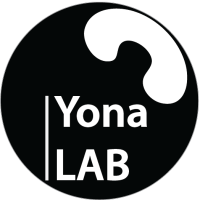In the lab our research focuses
on monocyte, DC and macrophage dynamics and function under steady state and during disease to gain insights into how these cells are regulated and regulate physiological and pathological processes. This will enable the rational development of new treatments, based on a clearer understanding of how the body responds to inflammation.We are based within the Faculty of Dental Medicine at the Hebrew University, on the Ein Kerem campus, helping foster our collaboration with Hadassah Hospital physicians.



Macrophages
(large eaters): In the late nineteenth century, the Russian zoologist Ilya Metchnikoff, established the idea of the phagocyte. Metchnikoff described the dissemination of macrophages throughout the organism where they ingest and degrade cell debris, foreign material and choreograph the inflammatory response. Functional diversity exists between anatomically distinct macrophage populations, for example the macrophages of the brain (microglia) are involved in neuronal development, alveolar macrophages in the lung are responsible for the clearance of surfactants while macrophages of the liver (Kupffer cells) recycle iron and cholesterol. The relationship and development of these populations has been a subject of much intrigue.
Monocytes
Represent a versatile and dynamic mononuclear phagocyte population. Monocytes are composed of multiple subsets which differ in size, morphology, transcriptional profiles and are defined by their location in the blood. These discrete monocyte subsets can be distinguished by the expression of CD14 and CD16 in humans and Ly6C, CCR2 and CX3CR1 in mice. In humans, Classical monocytes make up ~85% of the circulating monocyte pool, while the remaining ~15% consist of intermediate and non-classical monocytes. Classical monocytes are rapidly recruited to sites of infection and injury, where they exhibit considerable functional plastically. Interestingly, classical monocytes replenish resident peripheral monocyte-derived cells under steady state conditions.
Dendritic cells (DC)
were identified during the early 1970s. Early studies established that when activated DC migrate to draining lymph node bridging the innate and adaptive immune response as they present antigen to naïve T cells, kick starting their proliferation into effector T cells. Heterogeneity exists between DC subsets.

